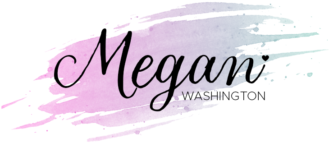Brand Evaluations: Billabong, Jovani, MAC Cosmetics
June 27, 2014
1. Billabong
Present on: Facebook, Twitter, Instagram, Google+, YouTube, Vimeo
* It’s important to note that Billabong has a general “Billabong” account which features things that are geared towards men to purchase as well as a “Billabong Women’s” accounts which are separate. For the purpose of this, I will be exploring the general Billabong accounts linked above.
Billabong is a brand that embraces excitement because their ads and signage always show beach lovers enjoying themselves under the golden rays of the sun. This is a consistent theme spread across all of the Billabong channels. Beginning with the Billabong website, crystal blue colored waves and neat surfing photos decorate the headers and backgrounds of the page. This trickles over into the different social media accounts, which I took a screen shot of and can be found below for your convenience. The exception to this would be Vimeo, and for reasons that include not being able to customize the channel page(s) like you can on other platforms.
 |
 |
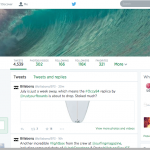 |
 |
 |
 |
 |
Billabong provides fresh content on a regular basis to their Facebook and Twitter accounts–most of which is the same. Linked across the accounts I was able to find posts directing me to the brand’s blog that is located on their website, products in their online store and third party websites like MySurf.tv and Surfline.com. Google+ seems like it is used a secondary channel for the brand since it receives about 1/3 of the content updates as the aforementioned. It did, however, include posts that directed users back to products available from the online store. Instagram, on the other hand, was interesting to view. Why? While it follows the consistent imagery that the other social media platforms are decorated in, it didn’t feature any posts about Billabong merchandise. Rather, it appears the brand is using Instagram as a way of keeping their fans up to date with what is going on with their surfing team. Monday through Friday, three pictures are posted each day and on the weekends it varies with about one photo. Like Instagram, Billabong’s YouTube channel seems to be focused on the brand’s surf team but did include minimal product videos in the mix. On each video description, links are included back to the Billabong website, YouTube channel, Facebook, Twitter and Instagram accounts. Next, we have Vimeo. Vimeo is clearly the inferior of the two video channels. There was less content present on Vimeo when compared to YouTube, but the channel did feature a really fun set of videos that featured their female surfers talking about their love for the sport entitled “Hello Paradise: Sumbawa” that were not available via YouTube.
An idea that I thought was really awesome was Billabong’s “Tossback Tuesday.” As you may have guessed, this is a post dedicated to imagery of surfers. On the other hand, Billabong didn’t use any hashtags to promote the idea. Personally, if I surfed that would be something I would love to participate with the brand in; posting my photos of getting tossed around on my board!
Hashtags seemed to be a weak spot for Billabong. While the brand did use some like “#slice,” “#model,” “#follow,” and “#throwbackthursday,” they seemed very post specific and not necessarily a term a user of the particular social media channel would use trying to find conversations about surfing, waves or the ocean.
Another aspect that I feel Billabong can improve on is integrating their channels together. Throughout their different posts, they did have some links directing followers and users to a few of their online homes, but there should be more of a consistent attempt to drive traffic to all things Billabong.
2. Jovani
Present on: Facebook, Twitter, Instagram, Google+, Tumblr, YouTube, Pinterest, Blogspot, LinkedIn, VK
I always want every single Jovani dress that I see, so I’m going to do my best to analyze their use of social media tools without being partial. At first glance, it appears Jovani is trying to go for social media overkill since they have an account on so many different platforms. Sometimes what you see is exactly what you get too. Example: Blogspot has not been updated since May 2013 and is not remotely even uniform with the rest of their accounts–it’s all black and white.
 |
 |
 |
 |
 |
 |
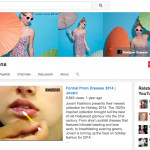 |
 |
 |
 |
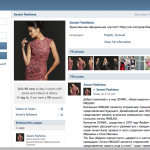 |
Let’s begin with a more in-depth look at Facebook. First and foremost, Facebook is the only platform that Jovani has integrated into their website, Jovani.com. On the right hand side of the screen about midway down, there is a Facebook widget that allows visitors to like the brand’s Facebook page directly from the website. Jovani’s Facebook has 651,472 likes yet only 5 posts were made this week on the platform. Included in the posts were all photos of Jovani dresses–some were high school prom photos. Two posts were linked to Jovani’s WordPress blog and were written by an intern to give fans of the brand a behind the scenes look at what it is like to be an employee. It’s a fairly interesting read and I learned new things about the company and their purchasing process for the fabrics and the minor details they put into creating such beautiful dresses. The other three posts made to Facebook were linked back to Jovani.com.
Twitter saw ten new posts this week. Every single post this week featured a link back to the Jovani website as well as the brand’s Instagram account. I checked the brand’s “Tweets & Replies” tab and saw that they did not reply to any of their consumers. The hashtags used on this platform reflect descriptions of the dresses like, “#green,” “#lace,” “#navy” and “#white.” Also included were “#Jovani” and “#JovaniFashions.” The posts were also unique to this platform and did not duplicate what was posted to Jovani’s Facebook page.
The Jovani Google+ page was updated with five posts this week, so it is up to date with current content. This platform also featured different content than what was on the company’s Facebook and Twitter.
If you’re going to use Pinterest, it should be used to your advantage. Jovani fell short in this area because some of their pins that they have made led to the image of the dress rather than the website, and some of the pins led right to the item. It’s important moving forward to them, that if they are going to pin their products, users will be more likely to purchase them if they have a link provided to them to get there.
For Jovani, YouTube is not one of their major social media platforms, but it does contain content that is updated roughly once or twice a month. The content featured on their YouTube channel are runway shows putting their dresses on display. The video descriptions on YouTube all provide links back to the official Jovani website.
The Jovani Tumblr account had 9 new posts this week–each featured a beautiful gown and in the description was the style number and a link back to the Jovani website.
Another platform that Jovani does not use to their advantage is Blogspot. The brand’s last post was made in May 2013 and the colors are all black and white–there’s no connection made to the brand other than the logo (which is displayed in black lettering). In all likelihood, this link should be removed from the Jovani website if the brand does not intend to use it.
LinkedIn was confusing for me. The page linked from Jovani’s website takes you to THIS page but it doesn’t have much information on it. This is the type of page a person fills out–not a company. I scrolled to the bottom of the profile to see that this “Jovani” page followed “Jovani” the company with the same pink logo featured on many of their accounts. When I clicked THIS link, it brought me to the actual LinkedIn information on the company–which should have been the link used to send visitors to from their website. Maybe they will catch that mistake. There is no reference of any other Jovani account on this platform.
VK – I actually had to look this network up because I was not familiar with it. Coincidently, VK is the second largest social network in Europe. It turns out that VK is the brand’s most updated social media account with having 15 posts this week. Each posting lists Jovani.com as where you will go once you click on the post’s image. However, when you click on the image it brings up that image in a larger size on your screen. There’s no reference of any other type of Jovani account on here.
It appears that Jovani wants to be doing the right thing with connecting with consumers but their posts are not engaging with them. Across all of the platforms, the only posts made were featuring dresses and had the dress style codes listed. A better way of engagement would be asking their fans which styles they preferred out of the different lines, or which color dress was their favorite for one of the particular styles that came in multiple colors. As I also noted in the Facebook section, Jovani does not really make an effort to integrate their social media networks together. You have their website that supplies the Facebook widget (and links to their official accounts), and then their Twitter account that links to images on their Instagram, but that is it. There is real opportunity for them to post across multiple channels directing users to other interfaces. The third area where Jovani has room for opportunity is creating a more uniformed look across their different networks. Each account featured a different photo of a dress, and would not be identifiable as Jovani to someone who would be browsing profiles. They could possibly make a better effort of using the same image to make their accounts more uniform, or put their logo on the images that they are using so users will have brand recognition by the logo.
3. MAC
Present on: Facebook, Twitter, Instagram, Google+, YouTube, Tumblr
When I think of MAC, I think of their classic, sleek black look with white lettering that consumes the brand’s image in stores, on their website, through direct mailings, on the products themselves and on the bags you carry out of the store. MAC has done a really great job with creating a uniformed appearance across everything–including their social media channels. Though, MAC has chosen to go with an inverted color scheme across their social media platforms.
 |
 |
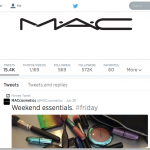 |
 |
 |
 |
For starters, just by quickly glancing at the above images, you can tell that MAC’s social media accounts are all uniform with one another and the product that the company sells. The MAC logo is present and simple to spot allowing visitors to easily identify the brand.
After taking a look at all of the different MAC Cosmetics accounts, I noticed that they were not updated very often this week (Twitter and Instagram – twice this week, Facebook and Tumblr – once, Google+ – none). However, MAC actually does a tremendous job of posting engaging content on their channels which invites their followers to interact with them.
Unlike the other two brands that I mentioned above, MAC also responded to numerous questions on both Twitter and Facebook even though they weren’t constantly posting new tweets or wall posts. The replies were specific to the questions asked, too! Example: MAC was recommending a lip color to a user who wanted to know which would be more what she was looking for.
While the majority of the posts on the different networks linked back to the MAC website, there were also video links that drove users to YouTube to view the brand’s extensive library that included everything from makeup tips to the video included in their latest posts on all of their channels: how to clean your brushes. The Google+ account specifically only featured the video posts that linked back only to YouTube. The MAC YouTube channel also included a sidebar that linked to the MAC Cosmetics channels in Japan, Brazil and beyond. It was very interesting to see that the brand provided content exclusively for those countries that did not speak English–making the brand more universal and accessible. Unlike what I saw with the brands listed above, MAC did not link back to their website or any of their social media accounts in their video descriptions.
The one post that MAC made to their Tumblr account had some rather interesting content and I am actually surprised they did not include it on their other accounts. The latest Tumblr post featured behind the scenes images from the 92nd Verona Arena summer outdoor opera festival in Italy where they were the official makeup sponsor. From there, the post did not link to any additional MAC accounts.
Instagram featured two new photos from this week, the first of which was Lorde who currently has a collection with MAC. The post used the same tags that were present on Twitter and Facebook, “#MACLorde.” The second photo was to introduce the launch of a new nail line called Nail Transformations with the hashtag “#MACMarianNewmanNail.” Additional hashtags that were used across the different networks included “#MoodyBlooms,” “#MACTip,” “#VivaGlam” and “#MACOsbournes,” which were all relevant to the content of the posts.
You can tell that MAC is making an effort to integrate their different media channels together with their focus on really driving users to the YouTube channel and website. If the professional artists who are creating the videos are using MAC products to show you how to complete the look, and if you happen to love that look, you’re going to want to get those specific products. It might be neat if MAC was able to incorporate their Tumblr and Instagram together a bit more to take advantage of the younger demographic–especially with their Lorde collection (she’s seventeen)!
[divider solid]
Tags: Billabong, brand, collection, cosmetics, evaluation, Jovani, JVN, Lorde, MAC, MMC5006, Osbournes, social media
